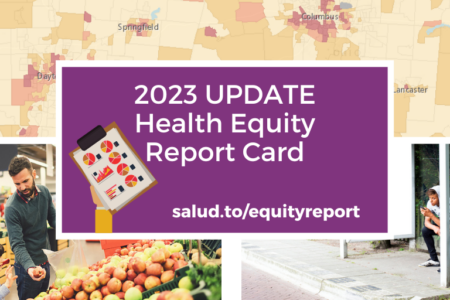
Share On Social!
Proposed changes to the Community Reinvestment Act (CRA) could bring back redlining, relax affordable housing definitions, and reduce the number of bank loans, investments, and services in low- and moderate-income communities and those of color, experts say.
The CRA was developed in 1977 to curb redlining—discriminatory lending—and push banks to better serve communities.
Now, federal agencies are proposing changes to modernize the complex law. But housing advocate Miriam Axel-Lute and others worry it weakens the CRA and is a “clear invitation to return to redlining.”
“In addition, some investments in infrastructure and sports stadiums in low- and moderate-income communities would now qualify for CRA credit without any requirement that they primarily benefit low- and moderate-income residents,” writes Axel-Lute of the National Housing Institute. “And the role of community voices in the assessment process would be practically gone.”
You can submit a public comment to keep CRA strong—and tie in transit—by April 8, 2020.
Submit This Model Comment: Keep the CRA Strong for Latinos and All People!
As a (ADD YOUR ROLE/OCCUPATION) in (CITY), I urge you to reconsider the proposed changes to the Community Reinvestment Act (CRA), which could negatively affect underserved communities and Latinos and other communities of color in my area. Docket ID OCC-2018-0008.
Latino families face a variety of barriers to affordable housing, according to a Salud America! research review (https://salud.to/healthequity). Latino homeownership rates have decreased each year from 2014-2017, meaning more Latinos are renting their homes. In fact, in 2016, over half of Latino household heads (54%) were renting their homes compared to 28% of White household heads. About 25% of Latino renting families spent at least half of their income on housing, meaning they are severe housing cost burdened. These families have little money left over to pay for other essentials to stay healthy and climb the economic ladder. Across U.S. counties, every 10% increase in the share of cost-burdened households is linked to: 29,000 more children in poverty; 86,000 more people who are food insecure; and 84,000 more people in fair or poor health.
I am concerned the proposed CRA changes will result in less lending, investing and services for the low- and moderate-income communities and Latino and other communities of color that were the initial focus of the CRA, and open up the return of redlining. The definition of affordable housing should not be relaxed to include middle-income housing in high cost areas. Rental housing should not count as affordable without verifying that lower-income people would be tenants. Athletic stadiums should not be added as an eligible activity. All banks should be subject to exams every two to three years. CRA investments should not be reduced to a dollar value and ratings should not be calculated by a single ratio score. Banks must be held accountable in meeting the needs of the communities they serve.
Hit the orange button to submit this comment!
Submit This Model Comment: Add a Focus on Public Transit in the CRA!
(ADD TOWN NAME) needs strong community investment not only in fair lending, but also housing that is connected to transit. Given the ongoing modernization of the Community Reinvestment Act (CRA), I believe this is an opportunity to keep the CRA strong for underserved communities and Latinos and other communities of color in my area, as well make new connections between transit and housing. Docket ID OCC-2018-0008.
Access to public transit is integral to Latino health and economic success. However, many Latinos report the cost of vehicle ownership and maintenance cause them to forego the purchase of food, healthcare, and other necessities, according to a Salud America! research review (https://salud.to/healthequity). Among urban residents, 27% of Latinos use public transit daily or weekly, compared to 14% of non-Latino Whites. Unfortunately, there is a mismatch between jobs, housing and transit, and it is felt worse by Latinos and other low-income and minority communities who have faced decades of discriminatory policies and practices. A high percentage of transit users are low to moderate income residents that could benefit from affordable housing and services located near transit. Development near transit or employment centers allows families to reduce spending on transportation and helps families better afford essential health care, education, and food expenses. However, few financial incentives exist to encourage affordable and workforce housing in transit accessible locations near job centers, according to a 2010 report (https://salud.to/nppreport).
To better support the development of affordable and workforce housing at transit locations, federal agencies could adjust underwriting guidelines. CRA ratings, for example, should give credit for lending that helps reduce the combined cost of housing and transportation. To this end, the CRA could play a role in facilitating inclusive communities near transit. Currently, there is no inclusion of transit in the many place-based designations for preferred lending under CRA regulations. The areas around transit, where developing or preserving affordable housing may be especially problematic, are often not considered to be among the “low- and moderate-income geographies” that are heavily weighted in CRA evaluations. The rule should revise the definitions of underserved areas to include additional census tracts where there are transportation barriers.
“If CRA criteria were updated, as some have suggested, specific favorable consideration in CRA ratings of lending for affordable housing that enhances mobility and reduces transportation cost might overcome the reluctance of some banks to lend to the non-standard affordable housing projects typical around transit,” according to a report on strategies to expanding affordable housing near transit by the Newport Partners, LLC in partnership with the Center for Transit-Oriented Development (https://salud.to/nppreport).
Currently, credit is given for investment in low- and moderate-income census tracts and for lending to low- and moderate-income borrowers, and extra credit is given for investments in “innovative” real estate development. Classifying affordable housing near transit as “innovative development” under the CRA would allow it to qualify for extra CRA credit and create incentives for entities covered by the CRA to invest in affordable housing near transit. Because transportation is often the second largest household expense, any transportation-related infrastructure projects, whether essential infrastructure or large infrastructure, should include criterion to specifically increase access to transit.
Hit the orange button to submit this comment!
Why Is the CRA Important Now?
For 43 years, the CRA has squashed redlining and improved access to housing and credit.
It remains a powerful tool for promoting community revitalization by encouraging banks to meet the credit needs of the local communities where they do business, particularly by providing investments and services to low- and moderate-income individuals.
 Still, people on all sides of this issue have called for modernizing the CRA because of inconsistencies and complexities in the evaluation of banks’ CRA-qualifying lending, investments, and services under the current CRA regulations.
Still, people on all sides of this issue have called for modernizing the CRA because of inconsistencies and complexities in the evaluation of banks’ CRA-qualifying lending, investments, and services under the current CRA regulations.
“Along with the banking industry, we and our members across the nation share the desire to modernize CRA. We also want the rules strengthened so banks do a better job meeting the credit needs of the communities where they take deposits. That’s the whole point of the law,” said Jesse Van Tol, CEO of the National Community Reinvestment Coalition, in a statement.
So, in 2014, the Office of the Comptroller of the Currency (OCC), Federal Deposit Insurance Corporation (FDIC), and Board of Governors of the Federal Reserve System conducted a decennial review of the CRA regulations and gathered public input to identify outdated, unnecessary, or unduly burdensome regulations.
In January 2020, the OCC and FDIC proposed a rule to strengthen the CRA regulations and issued a call for public comments.
However, some say the rule change will have negative effects on the underserved.
A major issue is a proposed ratio that would measure the overall value of a bank’s CRA activities against the value of its deposits, Van Tol said.
“This will encourage banks to seek the largest CRA financing deals, regardless of whether the deals make the most sense for local community needs,” he said. “That’s why many banks as well as community-based organizations oppose the ratio being the primary determining factor on CRA exams. While the proposal looks at assessment area performance, it sets up a scenario where a bank could run up the dollar volume in 50% of its assessment areas, and still pass.
“The Trump Administration seems determined to radically overhaul and water down the compliance system by introducing a numerical measure of performance that has been widely criticized, by bankers as well as community advocates, as overly simplistic.”
By The Numbers
56.9
percent
of Latinos are "housing cost burdened"



